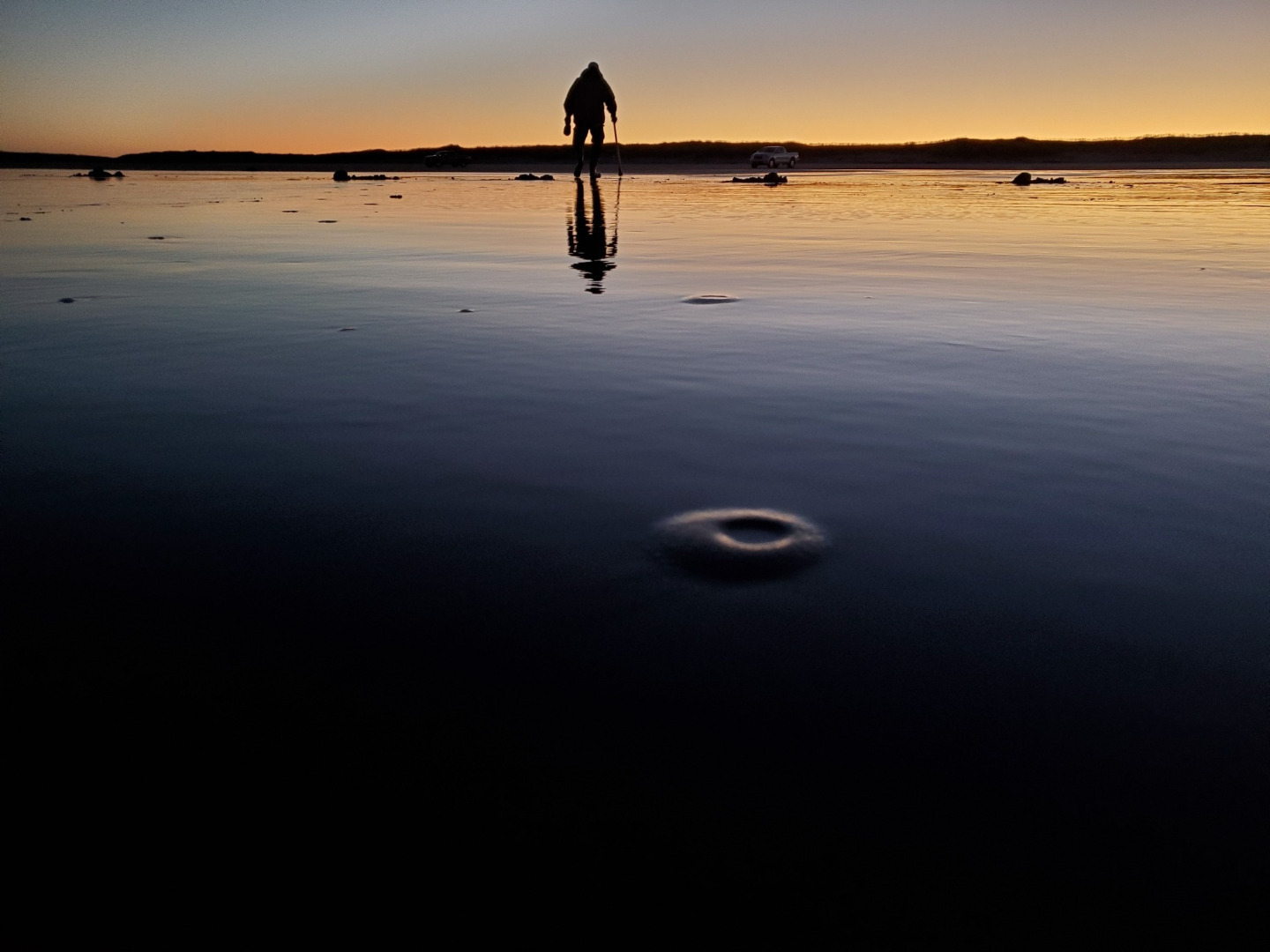Fish Report for 1-22-2025
WDFW approves seven days of coastal razor clam digs starting Jan. 26; more digs planned through March 1

by WA Department of Fish & Wildlife Staff
1-22-2025
Website
CORRECTION: No digging is allowed before noon during digs when low tide occurs in the afternoon or evening.
OLYMPIA – Washington Department of Fish and Wildlife (WDFW) shellfish managers confirmed seven days of razor clam digs on coastal beaches beginning Jan. 26.
“Diggers can look forward to another week of razor clamming,” said Bryce Blumenthal, WDFW’s recreational razor clam manager. “Success can be spotty this time of year, so don’t be afraid to walk or drive to a different area of beach and remember to stomp and pound the sand to make the clams show.”
Not all coastal beaches are open for every dig, so diggers are encouraged to make sure their intended destination is open before heading out. No digging is allowed before noon during digs when low tide occurs in the afternoon or evening. Most successful digging occurs between one and two hours before the listed time of low tide.
The following digs during evening (p.m.) low tides will proceed as scheduled, after marine toxin results from the Washington State Department of Health (DOH) showed razor clams are safe to eat:
• Jan. 26, Sunday, 4:34 p.m.; 0.1 feet; Long Beach, Twin Harbors, Mocrocks
• Jan. 27, Monday, 5:15 p.m.; -0.4 feet; Long Beach, Twin Harbors, Mocrocks
• Jan. 28, Tuesday, 5:54 p.m.; -0.8 feet; Long Beach, Twin Harbors, Copalis
• Jan. 29, Wednesday, 6:31 p.m.; -1.0 feet; Long Beach, Twin Harbors, Copalis
• Jan. 30, Thursday, 7:07 p.m.; -1.0 feet; Long Beach, Twin Harbors, Mocrocks
• Jan. 31, Friday, 7:44 p.m.; -0.7 feet; Long Beach, Twin Harbors, Mocrocks
• Feb. 1, Saturday, 8:21 p.m.; -0.1 feet; Long Beach, Twin Harbors, Copalis
Below are additional tentative dates:
• Feb. 8, Saturday, 3:36 p.m.; 0.1 feet; Long Beach, Twin Harbors, Mocrocks
• Feb. 9, Sunday, 4:29 p.m.; -0.3 feet; Long Beach, Twin Harbors, Copalis
• Feb. 10, Monday, 5:15 p.m.; -0.5 feet; Long Beach, Twin Harbors, Copalis
• Feb. 11, Tuesday, 5:54 p.m.; -0.5 feet; Long Beach, Twin Harbors, Mocrocks
• Feb. 12, Wednesday, 6:29 p.m.; -0.4 feet; Long Beach, Twin Harbors, Mocrocks
• Feb. 13, Thursday, 7:01 p.m.; -0.1 feet; Long Beach, Twin Harbors, Copalis
• Feb. 14, Friday, 7:32 p.m.; 0.4 feet; Long Beach, Twin Harbors, Copalis
• Feb. 24, Monday, 4:04 p.m.; 0.2 feet; Long Beach, Twin Harbors, Mocrocks
• Feb. 25, Tuesday, 4:46 p.m.; -0.3 feet; Long Beach, Twin Harbors, Copalis
• Feb. 26, Wednesday, 5:25 p.m.; -0.6 feet; Long Beach, Twin Harbors, Copalis
• Feb. 27, Thursday, 6:03 p.m.; -0.7 feet; Long Beach, Twin Harbors, Mocrocks
• Feb. 28, Friday, 6:39 p.m.; -0.6 feet; Long Beach, Twin Harbors, Mocrocks
• March 1, Saturday, 7:15 p.m.; -0.1 feet; Long Beach, Twin Harbors, Copalis
DOH requires test samples for marine toxins, and domoic acid levels must fall under the guideline level before a beach can open for digging. Domoic acid, a natural toxin produced by certain types of marine algae, can be harmful or fatal if consumed in sufficient quantities. Refer to DOH’s website for more information.
Final approval usually occurs about a week or less before the start of each digging series. More information about domoic acid, as well as current levels at ocean beaches, can be found on WDFW’s domoic acid webpage.
On all open beaches, the daily limit is 15 clams per person. Each digger’s clams must be kept in a separate container, and all diggers must keep the first 15 clams they dig, regardless of size or condition, to prevent waste.
All diggers 15 or older must have an applicable fishing license to harvest razor clams on any beach. Licenses can be purchased from WDFW’s licensing websiteand from hundreds of license vendors around the state. WDFW recommends buying your license before visiting coastal beach communities.
The 2024-25 Razor Clam Management Plan is available on WDFW’s website. For more information, refer to WDFW's razor clam webpage.
The Washington Department of Fish and Wildlife works to preserve, protect, and perpetuate fish, wildlife and ecosystems while providing sustainable fish and wildlife recreational and commercial opportunities.
More Reports
Steelhead fishery to open Feb. 1 on Skagit and Sauk rivers
Skagit River
1-21-2025
MILL CREEK - Fisheries managers with the Washington Department of Fish and Wildlife (WDFW) and co-managing tribes have forecasted that 7,019 wild...... Read More
WDFW announces tentative Cowlitz River recreational smelt fishery schedule
Cowlitz River
1-16-2025
RIDGEFIELD – The Washington Department of Fish and Wildlife (WDFW) has announced a new tentative schedule approach for the Cowlitz River recreational...... Read More

Website Hosting and Design provided by TECK.net